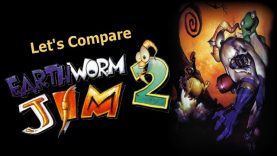Let’s Compare ( BallBlazer )
Gaming History Source
Video Locations:
1. ZX Spectrum 0:23
2. Apple 2 2:06
3. MSX 3:41
4. Amstrad 5:18
5. Famicom 6:55
6. Commodore 64 8:33
7. Atari 8 bit Opening 10:11
Gameplay 10:55
8. Atari 5200 12:34
9. Atari 7800 14:07
10. Atari ST ( Master Blazer ) 15:41
11. Amiga ( Master Blazer ) 17:30
12. Playstation ( Ball Blazer Champions )
Opening Cinema 19:13
Gameplay 20:50
13. Atari 2600 ( Prototype ) 24:11
Opening music is from The Playstation version. Ball Blazer Championship.
Link to Atari Age forum post
http://atariage.com/forums/topic/130990-anyone-think-ballblazer-is-possible-on-the-2600/
Description source:
http://en.wikipedia.org/wiki/Ballblazer
Ballblazer is a 1984 computer game created by Lucasfilm Games (later LucasArts Entertainment). It was originally released for the Atari 8-bit systems, such as the Atari 800 and the Atari 5200. It was also ported to other popular platforms of the day, such as the Apple II, ZX Spectrum (by Dalali Software Ltd), Amstrad CPC, Commodore 64, Atari 7800, and the NES. The Atari 800 version was called Ballblaster during development – pirated versions of the game went by this name as well. The principal creator and programmer of Ballblazer was David Levine.
In 1990, LucasArts and Rainbow Arts released a remake and follow-up to this game, called Masterblazer. This game was released for the Amiga, Atari ST, and PC DOS. A similar game inspired by Ballblazer called Space Football: One on One was developed and released by Triffix for the Super NES in 1992. Years later on March 31, 1997, a remake of the original titled Ballblazer Champions was released for the Sony PlayStation.
Game Play:
Ballblazer is a simple one-on-one sports-style game bearing similarities to basketball and soccer. Each side is represented by a craft called a “rotofoil”, which can be controlled by either a human player or a computer-controlled “droid” with ten levels of difficulty. (The game allows for human vs. human, human vs. droid, and droid vs. droid matches.) The basic objective of the game is to score points by either firing or carrying a floating ball into the opponent’s goal. The game takes place on a flat, checkerboard playfield, and each player’s half of the screen is presented in a first-person perspective.
A player can gain possession of the ball by simply running into it, at which point it is held in a force field in front of the craft. The opponent can attempt to knock the ball away from the player using the fire button, and the player in possession of the ball can also fire the ball toward the goal. When a player does not have possession of the ball, his or her rotofoil automatically turns at 90-degree intervals to face the ball, while possessing the ball turns the player toward the opponent’s goal. The goalposts move from side to side at each end of the playfield, and as goals are scored, the goal becomes narrower.
Pushing the ball through the goal scores one point, firing the ball through the posts from close range scores two points, and successfully scoring from long range (where the goalposts are not visible) scores three points. The maximum number of total points between the two players is ten, meaning that any points scored that would take the combined total above ten will cause the opponent’s score to be reduced by the same amount, resulting in a kind of tug of war scoring system. The game ends when either a player successfully scores ten points or the timer runs out. If time runs out and the score is tied, the game goes into “sudden death”, where the first player to score wins.













